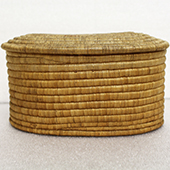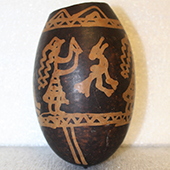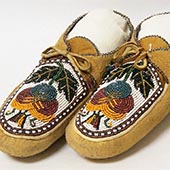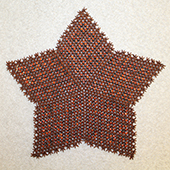Representing Societies
Inuit, Canada
The first Moravian mission among the Inuit was established in Greenland in 1733. This early experience taught the brethren missionaries that the Inuit economy required specialized equipment, tools, and skills that Inuit artisans had developed over centuries of living in the arctic. The missionaries’ interest in indigenous material culture paralleled the Moravians’ keen interest in how their own tools, technology, and material culture related to a prosperous society.
More missionaries were sent to establish a new Inuit Moravian community in Labrador, Canada, in 1770. Jens Haven and several missionaries from Herrnhut distinguished themselves from contemporary missionaries by their knowledge of, and respect for, the Inuit language. Respecting indigenous crafts and languages and was foundational to future missions in the Americas.
Additional Labrador missions were established over the next 150 years. The objects on display were likely created in support of the mission station at Makkovik, established in 1896. Missionaries regularly traveled between Moravian communities in the United States to lecture about the Inuit way of life and the mission’s influence. They sold handicrafts and souvenirs, supplied by Inuit artists, to raise money for their works. Lecturers also used Inuit-made models to demonstrate elements of the culture, such as transportation, architecture, and clothing. At the same time, advancements in photography meant that documentary images were becoming standard lecture fare by the close of the 19th century. Despite this new medium, objects remained popular lecture accessories.
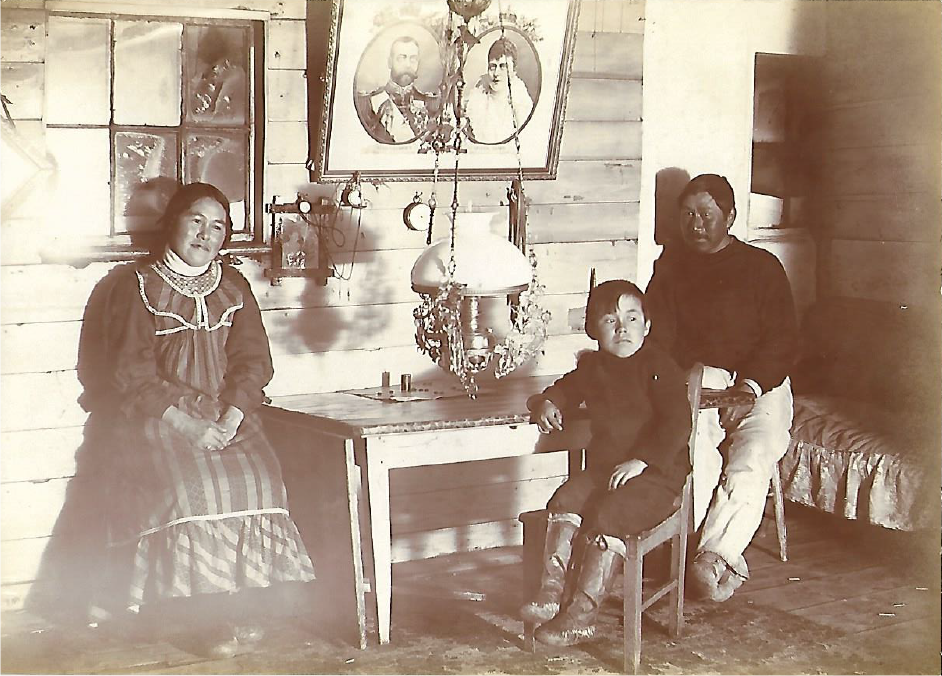
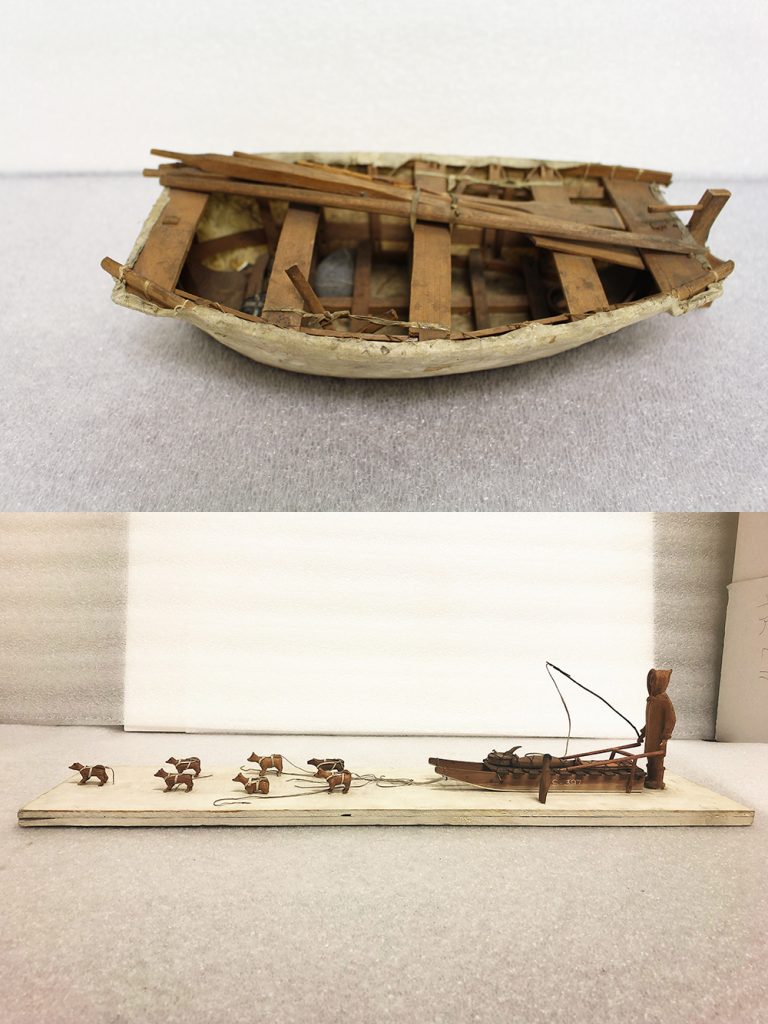
Umiak Model (1984.E.0684)
Dog Sled Model (1985.E.092)
These models may look like toys, but they are detailed vehicle replicas made using the same crafting expertise that goes into the full-size versions. Missionaries emphasized the skill of Inuit crafts. This message likely resonated with Moravian audiences, who were very interested in the Inuit technology required for arctic travel in particular. Of course, a dog sled model is much easier to transport across the United States than the real thing.
Igloo Model (1985.E.655)
Log House Model (1984.E.1188)
Moravian congregations in the United States were fascinated by Inuit architecture, especially the igloo. Igloos are temporary homes for the winter months. They are constructed of snow blocks arranged in a spiraling pattern, as the model demonstrates. It is just as likely that the Inuit artists who created these models were interested in Western architecture as well. The Makkovik mission buildings arrived pre-fabricated — partly purchased with money from souvenir sales.
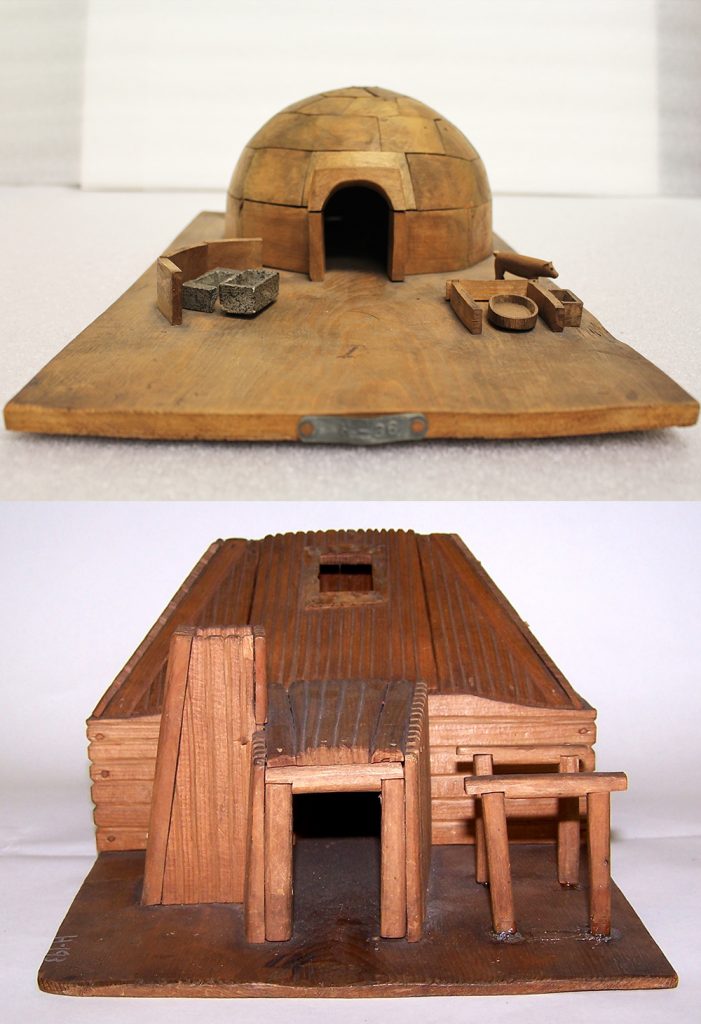
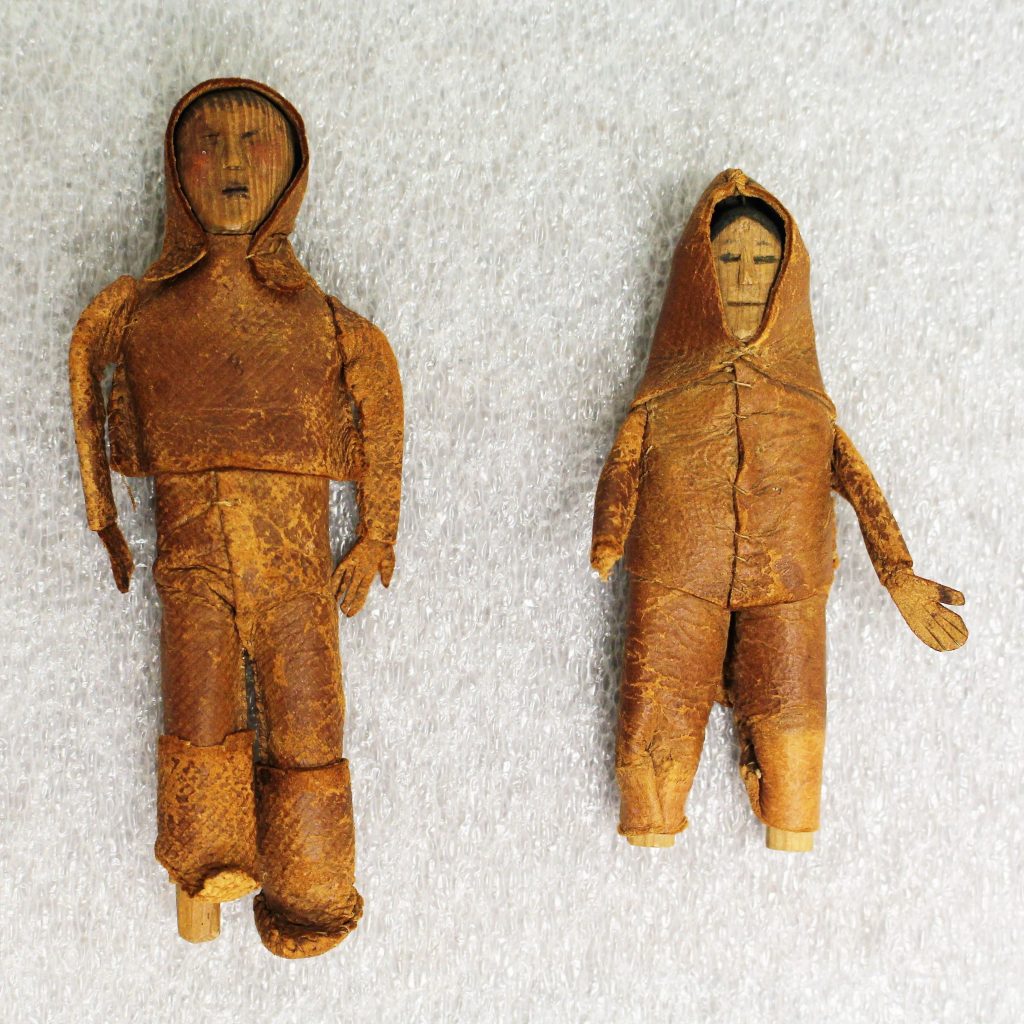
Dolls (1983.E.393 & 394)
Dolls dressed in winter clothing provided a glimpse of life in Labrador. The miniature coats, made from animal hide, distinguished their environment as unlike those experienced by congregations in the United States. Beyond imagining the arctic, these dolls provided a tangible link to another person—perhaps a young Moravian. Objects like these can be understood as a link between home congregations and the missionary field abroad, and an affirmation of both as part of the Unitas Fratrum.
Explore the other sections of the exhibit below
